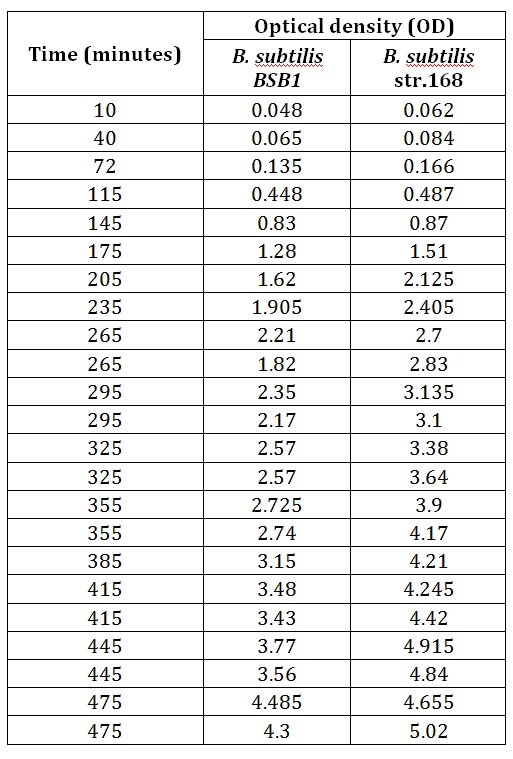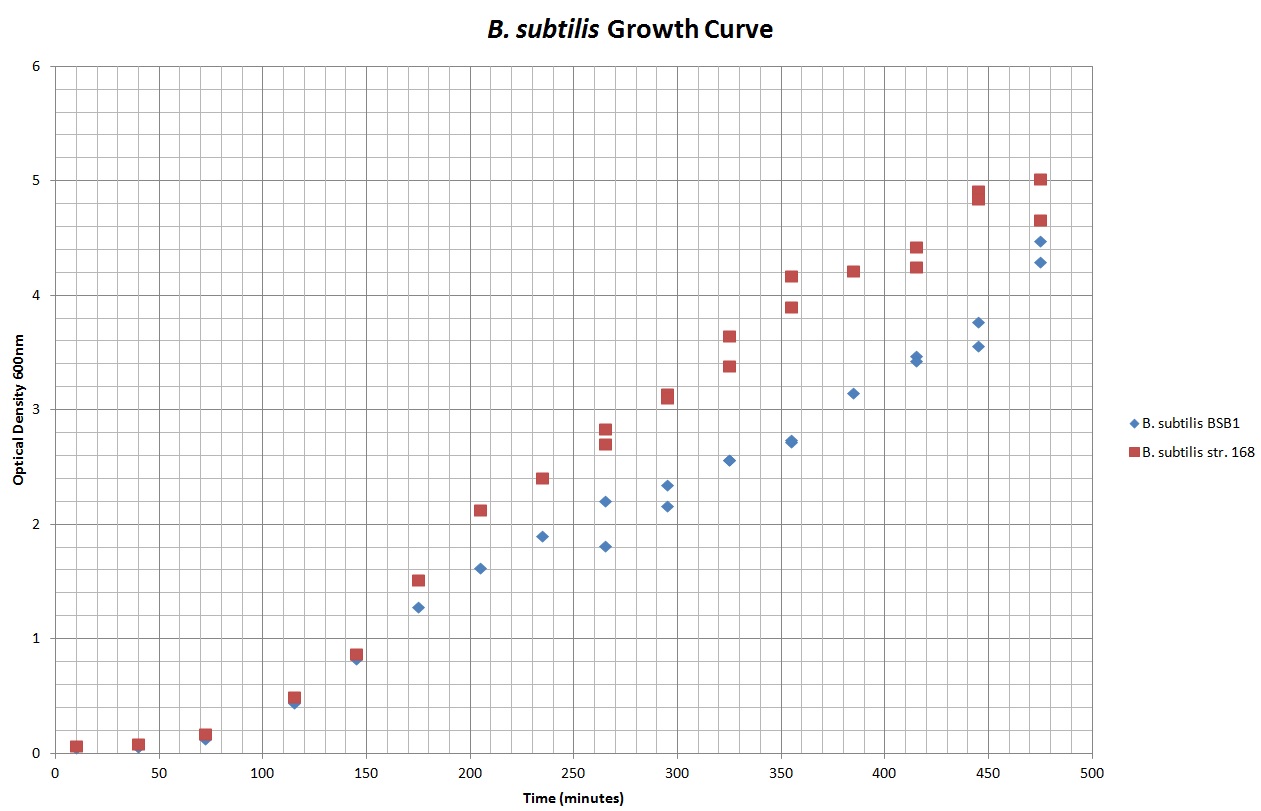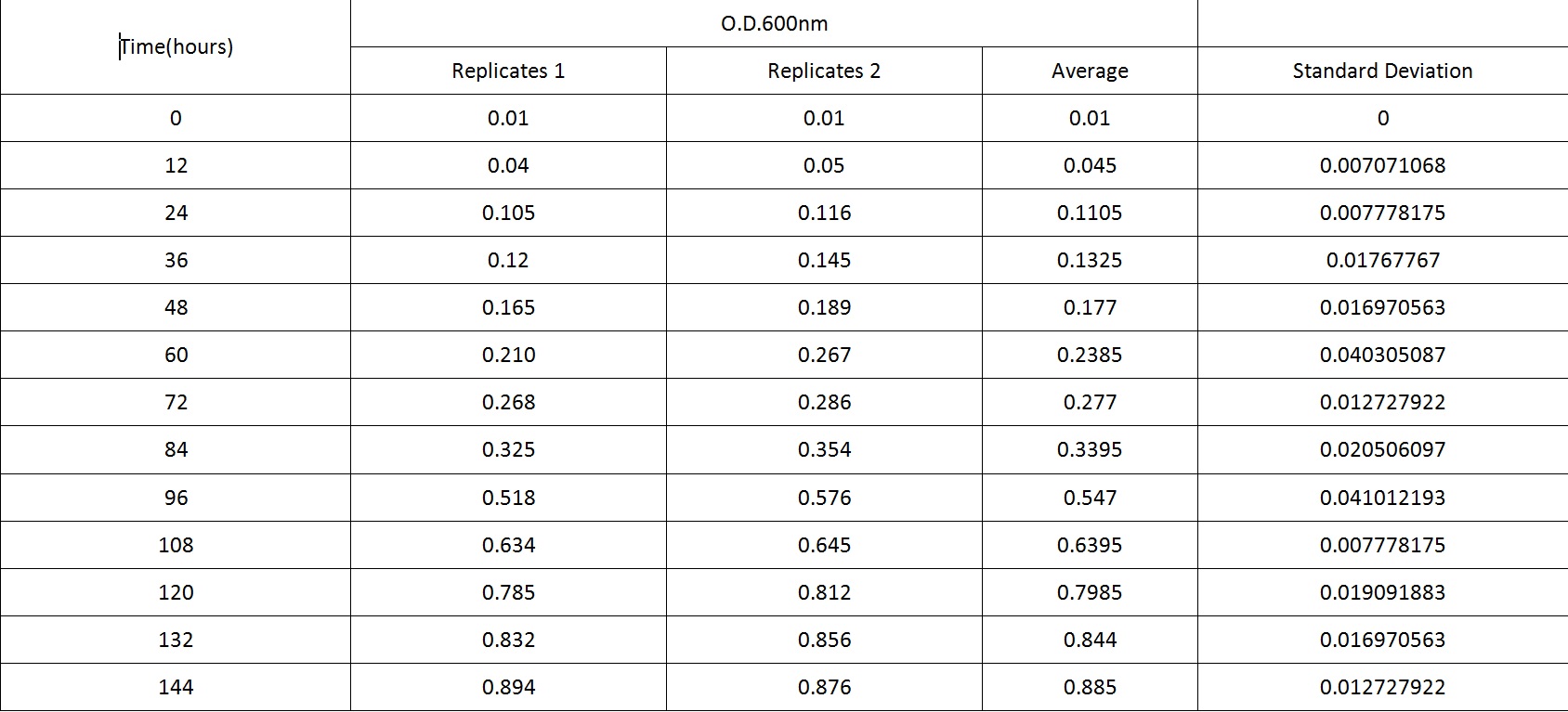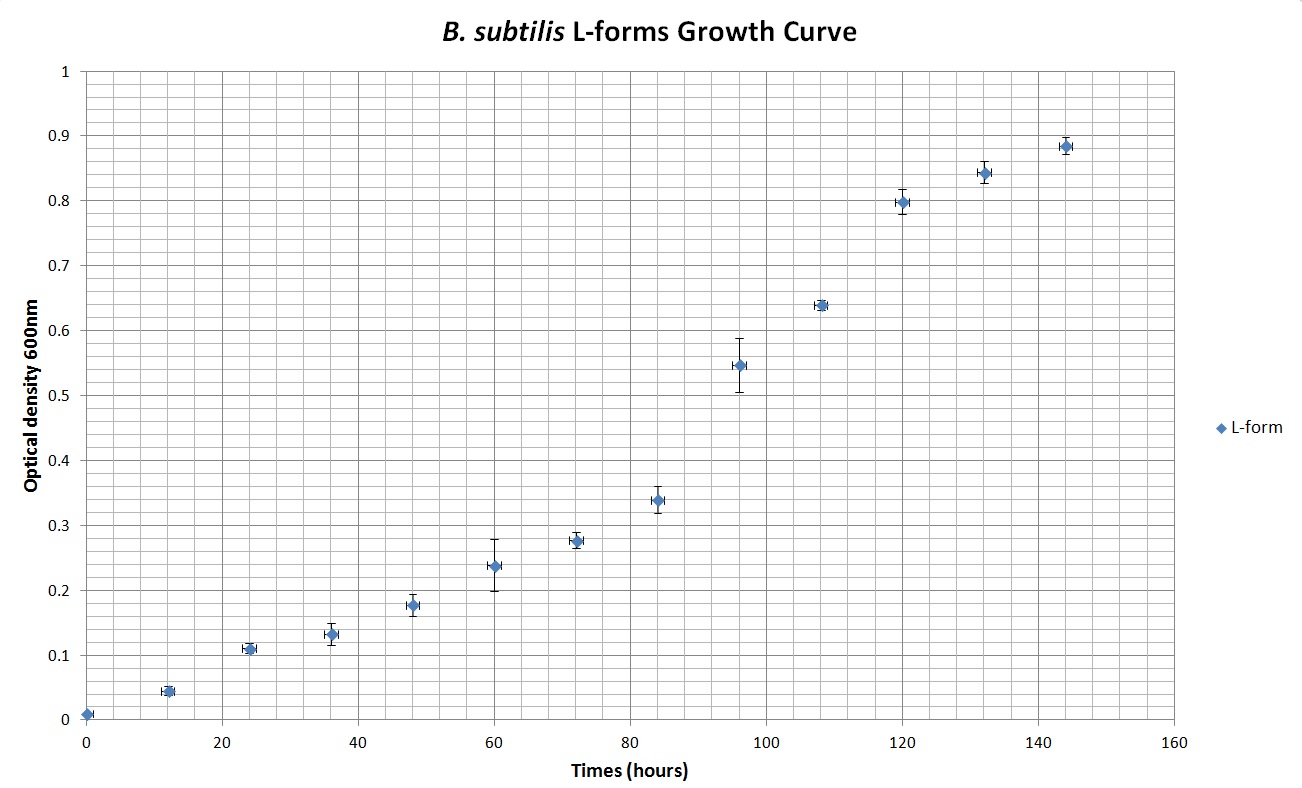Team:Newcastle/Project/L forms
From 2013.igem.org

Contents |
L-forms
Overview
We propose the use of L-form bacteria as a chassis for synthetic biology. L-form strains are derivatives of common cell-walled bacterial strains; however, L-forms are cell wall deficient. Many modern bacteria have the capacity to switch into L-form state, though specifically we are investigating L-forms in the model Gram-positive bacteria Bacillus subtilis. Unlike protoplasts, L-forms are still able to propogate and grow like their cell-walled counterparts. This growth and division does not occur in the same way as walled cells - L-forms have been described to undertake [http://www.ncbi.nlm.nih.gov/pmc/articles/PMC3603455/ membrane blebbing, tubulation and vesiculation].
As a result of their cell wall-deficiency L-forms are restricted by osmolarity much more then walled bacteria. L-forms require incubation for many generations in specific osmotically balanced conditions with enzymes and antibiotics that prevent invasion by walled contaminant cells. However, these specific osmotic demands of L-forms can also be seen as a kill-switch. Any bacteria that escape will no longer be in a maintained and osmotically balanced environment and will consequently not survive.
For conventional cell-walled bacterial strains to switch into wall-deficient L-form state the synthesis of the peptidoglycan cell wall must be disrupted. In B. subtilis this disruption can be achieved through controlling the expression of murE. The murE gene is responsible for the synthesis of a number of enzymes that are involved in the synthesis of a peptidoglycan precursor. When murE expression is down-regulated, this has a cascade effect leading to the down-regulation of peptidoglycan synthesis. It has been found that a mutation that spontaneously occurs in L-form B. subtilis cells is also necessary for the [http://www.ncbi.nlm.nih.gov/pubmed/19212404 survival of stable L-forms]. After selection for wall-deficient cells, survivors exhibit a mutation within the yqiD gene, which is similar to the Escherichia coli gene ispA. This mutation allows [http://www.ncbi.nlm.nih.gov/pubmed/23452849 for stabilisation of L-forms that are undergoing shape modulation due to excess of cell membrane].
The B. subtilis strain [http://www.ncbi.nlm.nih.gov/pubmed/23452849 LR2] - an L-form derivative of B. subtilis 168 created by the Errington research group at Newcastle University - contains a xylose-controlled promoter PxylR upstream of the murE gene on its chromosome. This allows for xylose-mediated control over murE expression. This strain also contains a chloramphenicol acetyl-transferase (cat) gene close to the locus of the PxylR promoter. This gene confers resistance to chloramphenicol and allows for selection for B. subtilis LR2 when in rod form. It is this region in the LR2 strain - containing the PxylR promoter and the cat gene - that has been utilised and altered to create the L-form switch BioBrick [http://parts.igem.org/Part:BBa_K1185000 BBa_K1185000].

Uses of L-forms in Synthetic Biology
The applications and research potential afforded to synthetic biology through employment of L-forms are numerous. All of these areas benefit from the removal of the cell wall from cells - as occurs when cells adopt the L-form state.
Easier export of cellular products
L-forms, characteristically, have no cell wall. With one of the main barriers which stands in the way of adding or removing things from cells gone, it is easier to add or remove things from cells. B. subtilis is a popularly used organism in biotechnology, in part because of its ability to export proteinaceous products. Bacteria in L-form state secrete more proteins than their cell-walled counterparts. This means that proteins that cannot usually be secreted due to the barrier of the cell wall can now be secreted and that proteins can be secreted at increased rates.
Gene fusion, shuffling and directed evolution
Bacteria in L-form state are able to fuse together. When they do this, their genomes can recombine or “shuffle”. Some of the bacteria, which result from genome shuffling will show more useful characteristics than the original bacteria. By selecting improved bacteria and forcing them to recombine their genomes, even more useful bacteria can result. Repeated iterations of this is termed “directed evolution”.
Antibiotic advances
Cell wall-deficient L-forms also provide a great research candidate for antibiotic discovery and progression. It is suggested that bacteria are able to adopt L-form state to avoid threats to their cell wall. As many antibiotics target the cell wall, the adoption of L-form state provides bacteria resistance to many antibiotics. Research undertaken with L-forms can allow for greater in-depth understanding of the mechanisms through which antibiotic resistance can be achieved. Further knowledge in this area can only give antibiotic development a ‘leg-up’ in the arms race against antibiotic-resistant pathogens. Furthermore, through trialing against L-forms, novel antibiotics that work through non-cell wall-targeted means, may be discovered.
Purpose
The purpose of this key area of our project was to create a BioBrick that enables the conversion of cell-walled B. subtilis cells into L-form cells that are cell wall deficient. L-forms should be able to be maintained in wall-less state once conversion from walled form is successful. The BioBrick should also facilitate the reversion back to walled cells when desired.
Our Objectives
- Design a BioBrick which places murE under the control of a controllable promoter.
- Have this designed BioBrick synthesised.
- Integrate the designed BioBrick into B.subtilis.
- Determine the functionality of the BioBrick in removing the cell wall.
Characterisation of Growth and Division
Figure 1.
Figure 2.
Figure 3.
Figure 4.
Characterisation of Osmotic Instability
One way that L-forms differ from their cell walled counterparts is in their inability to survive in a wide range of osmotic pressures. This adds biosecurity that any L-forms that escape into the environment will not survive. This is one reason that genetically modified L-forms could be used in the agriculture industry as an alternative to other engineered bacteria. We conducted experiments to decipher what osmotic pressures are suitable for our B. subtilis L-forms. This included growing L-forms in 50/50 NB/MSM media with a variety of sucrose concentrations. A soil sample was also taken from outside the centre for bacterial cell biology, water was extracted. This was used to test the ability of L-forms to survive in soil water, in the event that they escape from a laboratory or a host plant.
| Sucrose Concentration (M) | Time (mins) | O.D (600) | Rate of Decrease (%) |
|---|---|---|---|
| 0 | 0.640 | ||
| 10 | 0.126 | ||
| 20 | 0.114 | ||
| 0 (positive control) | 30 | 0.106 | 90.31 |
| 40 | 0.100 | ||
| 50 | 0.080 | ||
| 60 | 0.062 | ||
| 0 | 0.691 | ||
| 10 | 0.123 | ||
| 20 | 0.100 | ||
| 0.1 | 30 | 0.091 | 88.71 |
| 40 | 0.083 | ||
| 50 | 0.080 | ||
| 60 | 0.078 | ||
| 0 | 1.705 | ||
| 10 | 0.676 | ||
| 20 | 0.605 | ||
| 0.2 | 30 | 0.559 | 74.25 |
| 40 | 0.523 | ||
| 50 | 0.491 | ||
| 60 | 0.439 | ||
| 0 | 1.604 | ||
| 10 | 0.828 | ||
| 20 | 0.772 | ||
| 0.3 | 30 | 0.729 | 59.16 |
| 40 | 0.685 | ||
| 50 | 0.672 | ||
| 60 | 0.655 | ||
| 0 | 1.546 | ||
| 10 | 0.984 | ||
| 20 | 0.891 | ||
| 0.4 | 30 | 0.865 | 49.55 |
| 40 | 0.847 | ||
| 50 | 0.810 | ||
| 60 | 0.780 | ||
| 0 | 1.768 | ||
| 10 | 0.222 | ||
| 20 | 0.190 | ||
| Soil | 30 | 0.150 | 95.93 |
| 40 | 0.128 | ||
| 50 | 0.096 | ||
| 60 | 0.072 | ||
| 0 | 1.569 | ||
| 10 | 1.569 | ||
| 20 | 1.569 | ||
| 0.5 (negative control) | 30 | 1.583 | -1.28 |
| 40 | 1.584 | ||
| 50 | 1.584 | ||
| 60 | 1.589 |
Table 1. Change in the optical density of L-forms in different media, over time. This highlights how a change in osmotic pressure can affect the propensity of L-forms to survive.
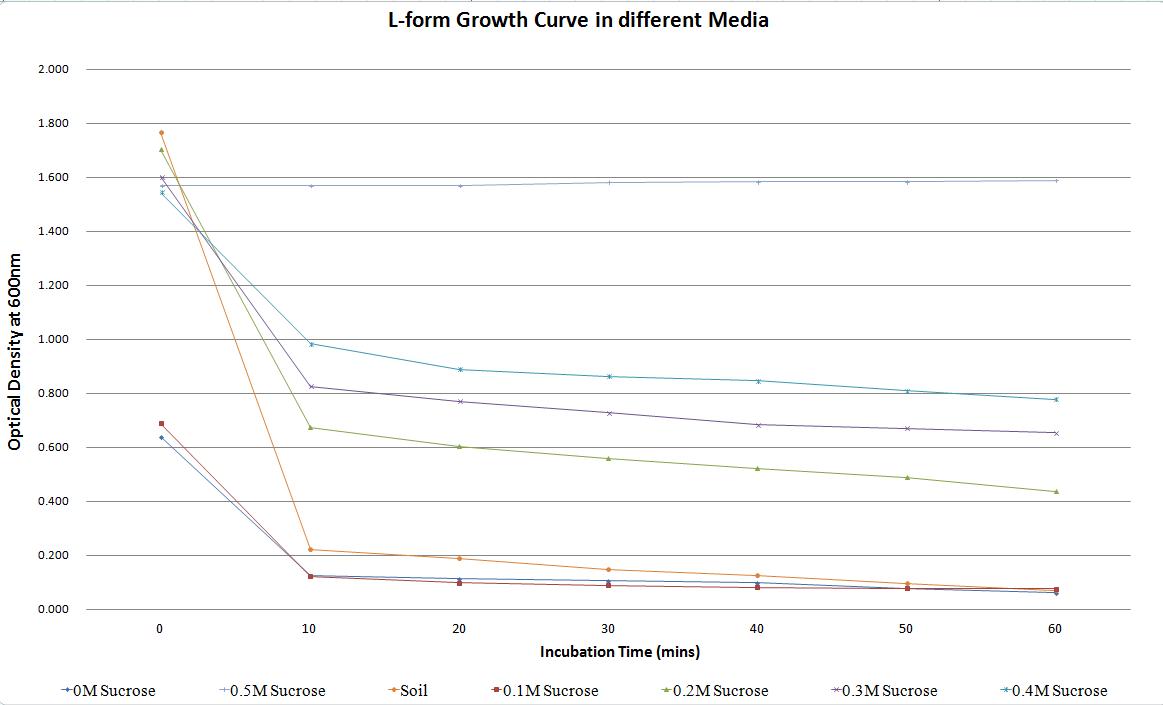
 |
 |
 |
 |
 |
 |
 |
Pic goes here |
Video 1. Showing L-forms with HBsu-GFP and L-forms with HBsu-RFP tag inside microfluidics chamber dying in soil water.
References
[http://www.ncbi.nlm.nih.gov/pmc/articles/PMC3603455/ Errington J. (2013) L-form bacteria, cell walls and the origins of life. Open Biology, 3, 120143.]
[http://www.ncbi.nlm.nih.gov/pubmed/19212404 Leaver M., Dominguez-CuevasP., Coxhead J.M., Daniel R.A. and Errington J. (2009) Life without a wall or division machine in Bacillus subtilis. Nature, 457, 849-853.]
[http://www.ncbi.nlm.nih.gov/pubmed/23452849 Mercier R., Kawai Y. and Errington J. (2013) Excess membrane synthesis drives a primitive mode of cell proliferation. Cell, 152, 997-1007.]
 "
"
